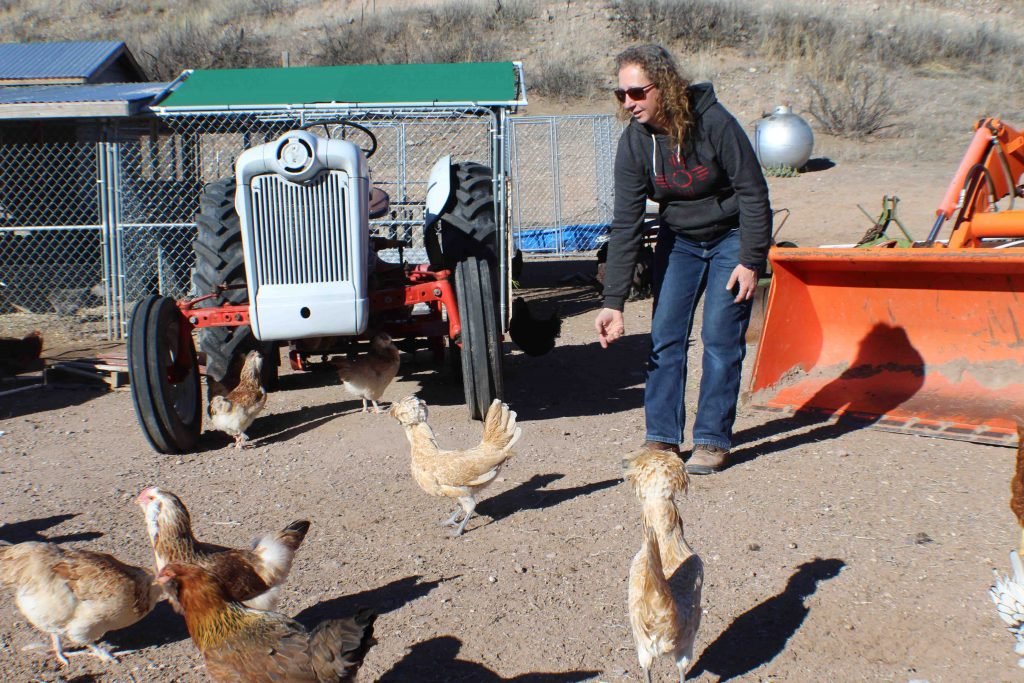to post
to post
written by
Nicholas Seibel February 1, 2023
Poultry farmer Lia Villarreal has about 65 birds at Dominguez Canyon Ranch. She benefits from rising egg costs, and she and other local egg producers sell affordable, local eggs at both the Silver City and Cliff/Gila Farmer’s Markets.
Like the rest of the country, Grant County is seeing the effects of rising egg prices and egg shortages, hitting both household and grocery store wallets. But unlike some places, Grant County has a strong local egg economy, with both demand and supply appearing to be on the rise.
As the cost of commercially distributed eggs has skyrocketed, the number of eggs produced in Grant County has risen moderately, encouraging more consumers to buy and produce eggs locally.
Town chick suppliers such as Tractor Supply and JD Feed and Supply report growing interest.
“More people are asking about chicks,” said Tractor Supply associate Ashley Turowski. It didn’t.”
According to the US Department of Agriculture, more than 57,000 birds in the US have been exposed to avian flu this year, which is a major factor in shortages and high prices.
But that’s not the only factor. Demand for free-range eggs is growing exponentially due to background cost factors. According to the Associated Press, the percentage of cage-free chickens has surged from 4% in 2010 to 28% in 2020. This number is expected to rise to about 70% over the next four years.
The cost of chicken feed is also an issue. Wheat and sunflower seed prices rose because of the war in Ukraine. Ukraine was the largest exporter of sunflower seeds. This affects large producers more than backyard poultry farmers. .
“Chickens are built to run free,” said Polly Cook, an avid chicken keeper. “The eggs they produce are very healthy and taste great. They are richer in vitamins than eggs from genetically modified chickens.”
Becky Carr, an egg buyer for Silver City Food Co-op, said recently that both commercial and local eggs have become difficult to obtain for a variety of reasons. Without a heated coop, most hens in Grant County don’t lay much during the winter.
Carr pays about 50 cents more for local eggs than he did a year ago, but not because of a shortage.
“The bird flu hasn’t really affected our local growers,” she said. “This is just inflation. Feed costs have gone up considerably.”
She also said more people are buying eggs from cooperatives.And traditional grocers are seeing the same trend.
“It’s killing us,” said Food Basket associate Chris Muniz. [as many eggs] because they are too expensive. We’re basically at breakeven on what we’re selling. ”
Leah Villarreal, a farmer and farmer’s market manager in Silver City, is well-positioned to benefit from increased demand for both local eggs and backyard chickens.
“As an egg seller, I have been positively affected by the recent rise in egg prices,” she said. I noticed that they usually run out of eggs within the first hour of the market.”
Villarreal, owner of Dominguez Canyon Ranch in Gila, moved from Arizona several years ago to start farming full time. She is just now reaching a breaking point where her poultry farming business pays for its operating costs and she also sells her poultry farms throughout their life cycle including eggs, meat and laying hens.
Villarreal has raised prices from $5 to $6 per dozen over the past year as the cost of feed has increased, but it doesn’t see the need to raise prices and wants to keep prices affordable. . She said that in the dead of winter a hen lays about one or her two eggs a day during her one-and-a-half month rest. During the spawning season, she brings about 40 dozen eggs to market from a flock of 60 to 70 hens.
She said she plans to sell laying hens in the spring for those who don’t want to raise chicks that require heated pens.
“Not at home!” she warned—chicks carry ticks.
For those willing to do the extra work, Tractor Supply plans to have chicks available in February. Potential chicken parents living in Silver City should also be aware of the chicken regulations outlined in last Friday’s Daily Press — available at scdailypress.com.
Villarreal estimates that 6-8 hens should be able to feed a family of 3-4 (the town’s limit is 6). She has a variety of breeds and recommends Rhode Island Red as a good layer.
“But it’s an interesting fact,” added Villarreal. “Chickens are the closest living relatives of Tyrannosaurus Rex on Earth today.”
— Joe Lutz
















